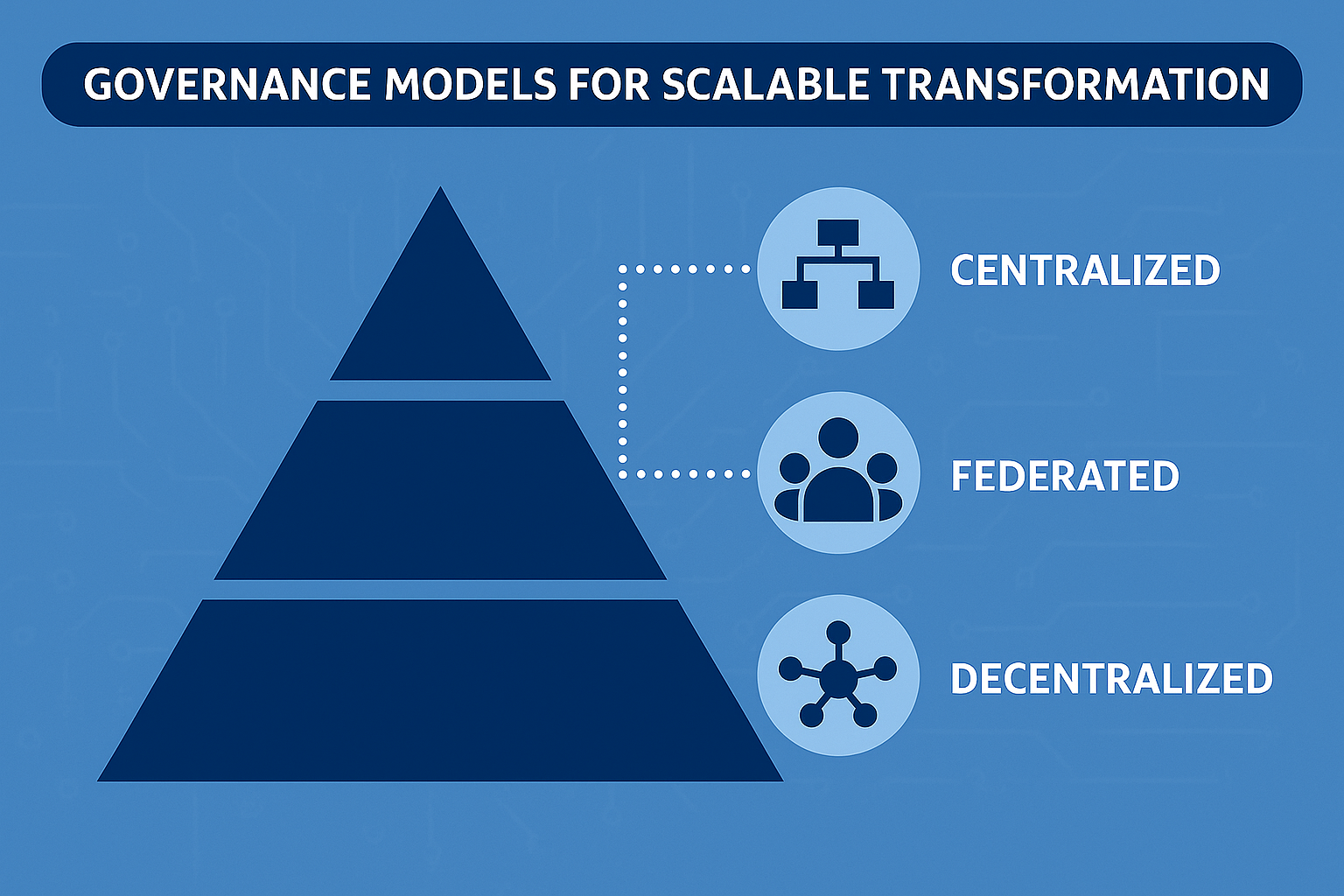Transformation fails without structure. Governance ensures innovation scales with stability.
The Governance – Scale Equation
As digital initiatives multiply, so do complexities—across technology, teams, data, compliance, and vendors. Without strong governance, transformation efforts become fragmented, costly, or unsustainable. A governance model acts as the operating system that aligns vision with execution.
Core Objectives of Governance in Digital Transformation
Strategic Alignment: Ensures initiatives match long-term business goals.
Value Assurance: Tracks ROI, KPIs, and outcomes beyond project delivery.
Risk & Compliance: Manages security, data privacy, and regulatory adherence.
Resource Optimization: Balances people, budgets, and tools across efforts.
Accountability & Transparency: Clarifies who decides what, when, and how.
Types of Governance Models
1. Centralized Governance
Single transformation office or digital leadership body
Pros: Consistency, control, reduced redundancy
Cons: Slower decision-making, lower agility
2. Federated Governance
Hybrid model where business units retain autonomy within shared rules
Pros: Flexibility + alignment
Ideal for large enterprises with diverse functions
3. Decentralized Governance
Each unit drives its own digital agenda
Pros: Speed, local innovation
Cons: Fragmentation risk, duplication of effort
Key Enablers for Scalable Governance
Digital Playbooks: Standardized templates, tools, and best practices
Portfolio Management Frameworks: Prioritize initiatives based on business value
Decision Rights Matrix: Defines who owns decisions, approvals, escalations
Dashboards & Metrics: Real-time visibility into progress, blockers, risks
Governance Councils: Cross-functional groups that steer and course-correct
Adapting Governance to Evolving Needs
Scalable governance isn’t static. It must evolve as digital maturity increases:
Startups or pilots → Light, adaptive governance
Scaling phase → Structured governance with guardrails
Enterprise-wide transformation → Institutionalized governance with accountability layers
Conclusion
Governance isn’t about bureaucracy—it’s about clarity, coherence, and control. The right governance model turns isolated projects into a unified transformation journey, ensuring scale without chaos.





